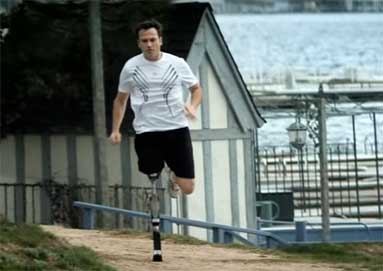Spanish and Catalan speakers tend to overuse “for” when expressing purpose in English, especially before verbs. Awareness-raising and practice is needed in order to foster the correct use of the infinitive of purpose.
The following video, by the charity Team World Vision, contains 15 examples of expressions of purpose, with nouns, verbs and clauses.
A common practice when using texts, audio or video is to create some introductory questions to activate the students’ previous knowledge on the topic. Conversation is usually productive and, unless teachers fear disruption, student groups may be richer than pair work in terms of ideas. These are the instructions and questions I prepared:
Work in groups of three or four. Discuss these questions. Think about reasons and examples related to yourself and to people you know.
- Do you usually go running?
- Do you know anybody who goes running regularly?
- In your opinion, what are the advantages of running?
- And the disadvantages?
The discussion usually lasts about 10 minutes, as some time is necessary to explain the activity, to put some ideas in common with the whole class, and to get back to silence.
Students are ready to watch the video. Some of the sentences are easy to understand, while othes are barely audible or complex in terms of grammar and / or vocabulary. So, students are asked to enjoy the video and try to remember a bit of it:
You’ll watch a video where different people explain what they run for. They give their reasons for running. After watching the video, try to remember 2 of the reasons they mention.
After watching the video, we elicit students’ answers and we can write them down on the blackboard or on a document. This way, some students can benefit from what their partners understood and we prepare the scene for the next activity, which asks students for very precise information:
Work in groups of three. One of you is going to write all the reasons beginning with to. Another group member will write the reasons beginning with for. The other group member will note down the reasons beginning with because.
Depending on the students’ level, we may decide to show the video with subtitles. Subtitles were not available on Youtube, so I typed in the subtitles using Windows Movie Maker. This was the result.
The teacher usually has to help students out with some difficult sentences. Most expressions of purpose are easy to identify, though.
Finally, production is encouraged, both through individual and group work
Work individually. Think of an activity you like doing regularly. Why do you do it? Write a reason with for, a reason with to, and a reason with because.
Activity: ________________________________________
For: ___________________________________________
To: ____________________________________________
Because: ________________________________________
Now, work in pairs or in groups of three. Tell your partners about your activity and why you do it. Ask your partners questions about their activity.
This is the worksheet for classroom use:
And here is the teacher’s guide and answer key.
